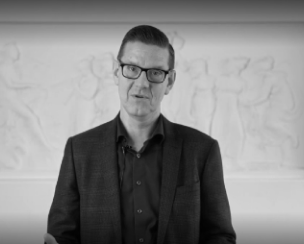

Agility rhymes with stability
New study: True agile companies are both dynamic and stable at once.
Here you get a well-documented idea of how your company and organization become more agile, while maintaining stability and thus a foothold.
Agility. We come across the concept here, there and everywhere at the moment, and if you haven't already heard of it, then you'll definitely come to it. Agility is a demanded condition in Danish companies, and for good reason. For agility is currently one of the best answers to how we successfully relate to and act in the massive changes that come with disruption, digitalization and all the other exciting but also potentially threatening prophecies about the future conditions for business. And thus for the everyday life and reality that you and your company or organization are in the middle of.
In a quite readable article, the consulting house McKinsey has described what it takes from an organization or entity to be agile. With a solid data-based approach, they have investigated and determined that agility requires both dynamic and stable practices (in English called practices). Dynamic practices enable rapid response and adaptation. Stable practices ensure continuity and predictability and are the backbone of the company.
Dynamic and stable practices play together across companies and organizations, and in this intersection four overarching categories emerge that can be used to describe the individual entity in the organization. With English concepts, McKinsey categorizes the four types as respectively. Agile,”Start-ups“, Bucharia and Trapped, and they are characterized by the following with our translation:
- Agile: High on both dynamic and stable practices
- Start-ups: High on dynamic and low on stable practices
- Bureaucratic: Low on dynamic and high on stable practices
- Locked: Low on both dynamic and stable practices
What distinguishes the agile from the other types depends on the starting point. McKinsey, based on their analyses, indicates some specific paths towards the more agile approach. Based on the recommendations, partner and senior consultant in Resonans, Mikkel Ejsing, in this article in Børsen Ledelse highlights the recommendations that he considers most relevant in light of the challenges we are experiencing and working with in Danish companies at the moment.
Read more
Read on, find your starting point, and get Mikkel Ejsing's best advice on how to become (even) more agile.
More articles
We write articles that can help top managers, boards, employees, citizens and business actors to succeed better - both together and separately.



Get the latest news on strategy implementation
If you want to keep up with the latest trends and developments in strategy realization, our LinkedIn page is the right place for you.
Visit us on LinkedIn